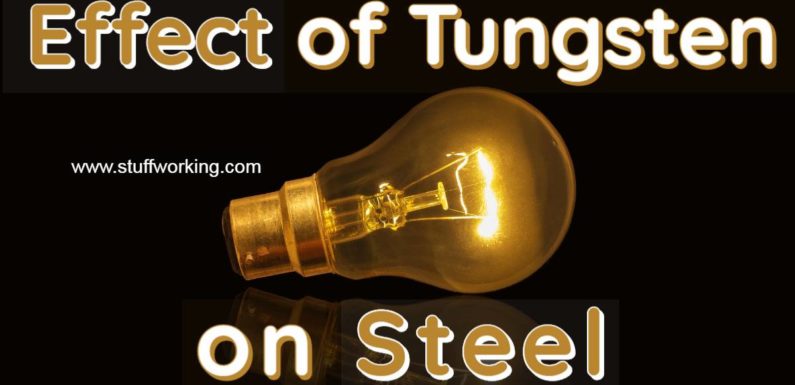
Last updated: June 29, 2020
The effect of tungsten on steel has always been an important question for materials scientists and engineers. Hence in this article, we are going to study tungsten and its effect on steel and on other materials.
Background information
Tungsten is one of the rare metals on earth. Its chemical symbol is ‘W’ that stands for Wolfram. Tungsten is actually a Swedish word which means “heavy stone”.
Pure Tungsten metal was first found in 1783 by two Spanish chemists the de Elhujar brothers. Due to its highest melting point and lowest vapor pressure of all metal, it always became an interesting metal to study. As the steel industry began to grow and began to be used on a large scale, engineers began to need some more qualities and properties that steel alone could not achieve. Such as corrosion resistance, strength, hardness, red hardness, rising critical point, etc. Tungsten was then introduced into steel for these additional properties
Tungsten in Steel Alloy
Steel itself is an alloy of iron(Fe) and carbon(C). We can get a variety of steel with different properties by mixing different metals. Tungsten is one of the first metals used to improve steel.
Important Properties of Tungsten (W) for steel
- The highest melting point of all metal. i.e. 3,422°C (6,192°F ).
- The highest tensile strength at temperatures over 1650°C.
- Expands less than any other pure metal from heat.
- High resistance to corrosion.
Effect of tungsten
- Tungsten when added to steel, will raise the critical temperature.
- It will improve red hardness of steel.
- Tungsten when added to steel, will improve resistance to plastic deformation.
- Tungsten when added to steel, improves wear resistance at high temperatures.
Application of Tungsten steel
- Tungsten steel as tool steel for cutting other material.
- Tungsten steel as duplex steel for corrosion resistance applications such as offshore oil and gas production.